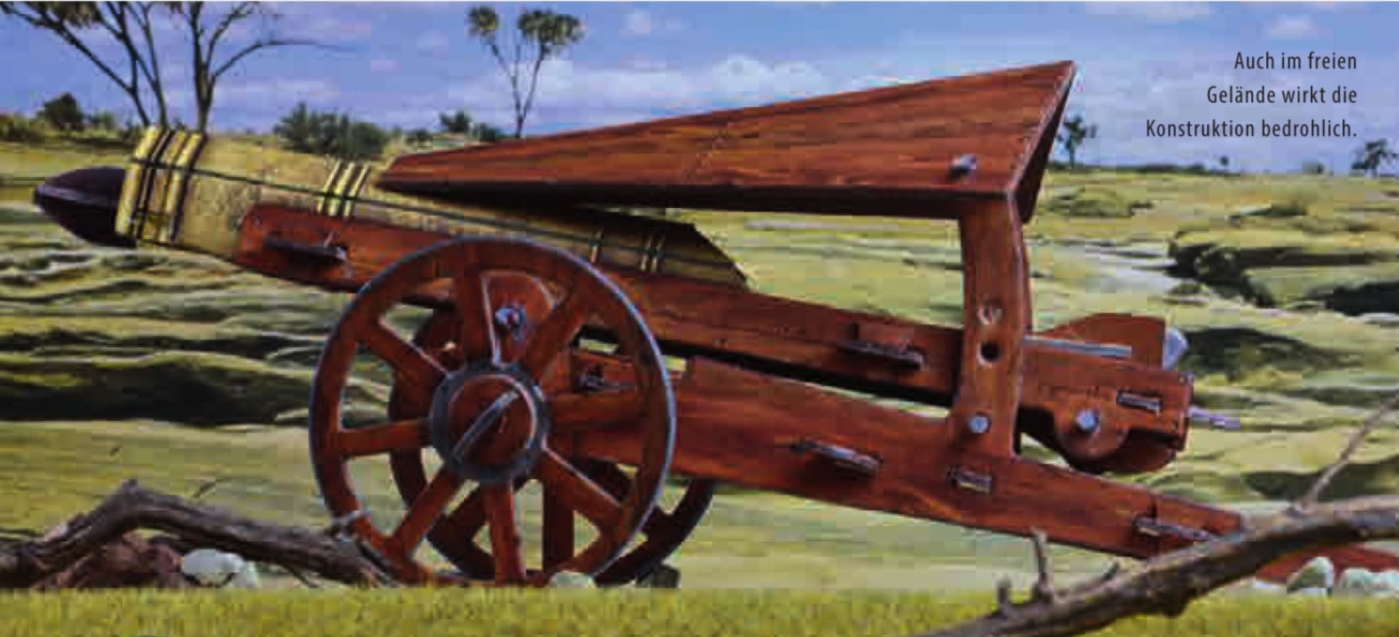
The drawings depict minors two shells with gunpowder, top «wants the bag inside the bullet“; a queue of bombs “that does not come back to dirieto to take in galley” (the galley was the typical warship used in the Mediterranean from the ninth to the eighteenth century.); Other casing with two types of powder a – b, “mode of foil – to – fine powder, – b – fluffy powder and bombards‘; especially a dart with feathers for spingarda “these pens want to jump fuora spring, when and dart out of spingarda»
Leonardo in another note says it can build a spingarda composed of various sections for better transport and reassemble where necessary, “once, Because of this make a bomb of 40 pieces, and remains as one piece. Female–Male–Male–Femena »
The name Spingarde was used to indicate a kind of war machine that was used to throw stones. The development of gunpowder changed the way in which the Spingarde was fired but the name stuck for a while.
The Leonardo design for the Spingarde cannon typically brings together many existing features into one device – firstly a cannon mounted on a carriage with wheels for mobility. He then brings to it the ability to be aimed whilst the frame is staked to the ground to control the recoil. It does this by having a secondary carriage gimbal mounted on the fixed frame so that the cannon can be adjusted in yaw (side to side) and Pitch (up and down).
It has breech-loading of the powder and cannon ball, a feature used to increase the rate of fire in battle as these breech blocks can be pre-loaded. Cannon of this type was generally known as Breech-loading swivel guns.The open space at the back end of the barrel was where the breech block would be fitted, and held in position by a wedge. Leonardo has brought some more precision to this design by introducing a screw connection between the barrel and the breech, a similar system used in modern weapons.
Finally, it has protection for the artilleryman loading and operating the cannon, a roof has been added and fixed to the barrel at the front and the pitch mount at the rear.
All of the features were in existence around Leonardo’s time but he has developed some more detail into these features.